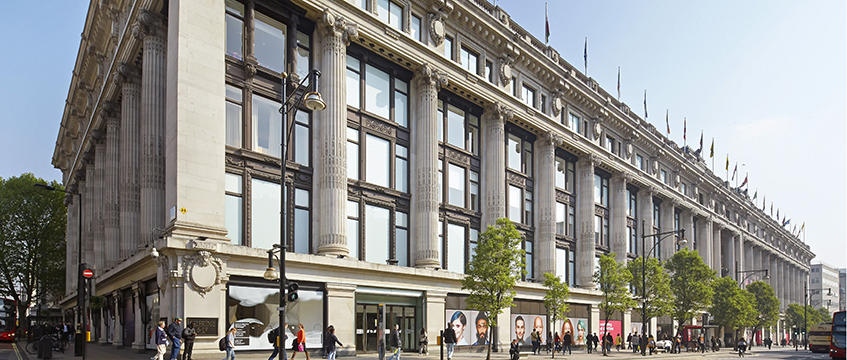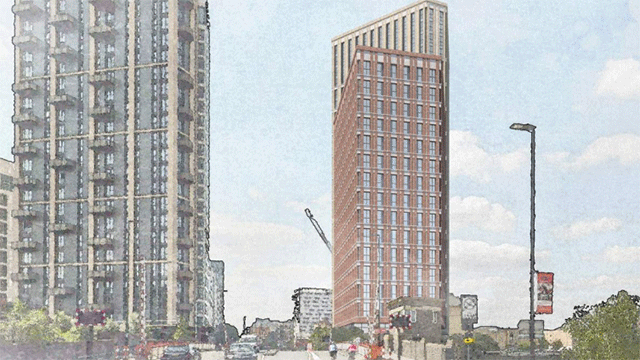COMMENT: In an age where environmental consciousness and economic constraints are increasingly pivotal, the many benefits of retrofitting historical buildings rather than constructing new ones are becoming clearer.
A restoration-focused strategy not only conserves the rich heritage and architectural legacy of our urban landscapes, but it also brings substantial environmental advantages.
In the UK, revitalising historic structures goes beyond simply maintaining architectural form – it is a commitment to preserving cultural heritage and reinforcing community identity. Historic buildings act as physical conduits to our history, providing insights into earlier times and showcasing the architectural innovations of those periods.
These landmarks, layered with distinctive historical importance, can enhance community pride and cohesion, serving as prominent, recognisable landmarks within a locality. For example, the Pattern Shop in Newcastle, previously a derelict building, has been revamped by Newcastle City Council and Igloo Regeneration into a sustainable office space. This project required extensive structural reinforcements and meticulous conservation of original architectural elements.
Reducing embodied carbon
From an environmental standpoint, renovating historical buildings is markedly more sustainable than new constructions. Restorations generally consume less carbon, primarily because the materials are already in existence and on site. Refurbishing a building emits just a fraction of the embodied carbon compared with new constructions, positioning it as a greener alternative.
Historic England reports that repurposing buildings can save between 50%-75% of the embodied carbon that would be emitted by new constructions. Additionally, keeping these buildings instead of replacing them helps prevent the dispersal of embodied carbon previously emitted during their original construction.
The Mundella building in Nottingham, a former school repurposed by Blueprint Regeneration after decades of standing empty, exemplifies sustainable restoration. Sensitively converted into residential, the building has maintained its historic integrity while adapting to contemporary living standards.
Mundella’s transformation is notable for how it preserved the building’s existing framework. Minimal new openings were required, reducing the need for new structural materials. Original staircases and cloisters were also preserved, and while the roof needed resurfacing to meet warranty standards, the primary roof structure was left intact.
Any materials that could not be reused in the refurbishment were either claimed by architectural salvage operations or recycled, ensuring that no construction waste was sent to landfill. Old doors from the school were re-modelled into contemporary furniture pieces that were then used in the building’s show home. This project demonstrates how older buildings can be adapted with minimal new material requirements, aligning with current environmental goals to reduce embodied carbon.
Benefits and challenges
From an economic perspective, reviving historic buildings can stimulate local economies through tourism and the utilisation of local crafts and trades. Major restoration projects often demand specialised skills in traditional construction techniques, therefore preserving and promoting heritage crafts.
Moreover, revitalised buildings can also serve as hubs for new businesses and attract talent, offering unique retail or office spaces that enhance the economic diversity and vitality of a city or town.
While the restoration of historical buildings offers many benefits, it also presents complex challenges.
These include securing financing, obtaining planning permission (and sometimes listed building consent), and ensuring that modern adaptations preserve historical authenticity — all of which can be formidable hurdles.
These challenges necessitate a coordinated approach among local authorities, developers, local communities, and heritage conservation experts to devise practical solutions that respect both historical significance and contemporary usability.
In the UK, restoring historic structures involves managing a complicated array of conservation standards and regulations, particularly when dealing with listed buildings. Each modification or restoration attempt must secure Listed Building Consent, which ensures that any changes honour the building’s historical significance and integrity.
Additionally, aligning with modern accessibility standards, as outlined by the Equality Act and Part M of the Building Regulations, can be challenging due to the unique layouts and structural features of historic buildings. These regulatory frameworks are designed to safeguard the buildings’ heritage, often requiring innovative solutions to balance historical preservation with modern needs.
Furthermore, there is the challenge of sourcing authentic materials that correspond with the historical period of the buildings. This task often necessitates extensive research and collaboration with skilled experts who specialise in traditional construction methods.
There is a significant shortage of skilled labour proficient in these historic crafts, which can delay restoration projects and increase costs. These craftsmen are vital in maintaining the structural integrity and aesthetic authenticity of historical buildings, from masonry to woodwork.
It is also essential to not only secure sufficient funding but also foster multi-level collaboration between the public and private sectors. This partnership should extend beyond financial aspects to include sharing skills, networks, and risks, while maintaining flexibility in project delivery. These collaborative efforts are crucial for preserving culturally significant structures for future generations.
Innovative funding strategies, like the Apprenticeship Levy to train artisans in heritage skills or creating incentives for private investments in conservation projects, are pivotal. Actively engaging local communities and cultivating a sense of shared responsibility can also significantly boost public support and enhance the impact of these initiatives.
Communities’ heritage
Efforts to restore historical buildings are not solely about conserving bricks and mortar; they are about preserving the cultural narratives and identities of communities. By overcoming these challenges through creative solutions and collaborative efforts, we can ensure that our rich architectural and industrial heritage is preserved and appreciated by future generations to come.
The property development industry is starting to witness a transition, from repurposing post-industrial buildings to adapting post-retail spaces such as obsolete department stores, driven by shifts in consumer behaviours and the decline of traditional retail. Many of the UK’s cities are already taking great strides to demonstrate the broader economic and social impacts of historic refurbishment, proving that such projects are not only viable but also tremendously beneficial.
Ultimately, historical renovation represents a strategic and sustainable choice in property development, marrying the preservation of heritage with the demands for modern functionality.
When we consider both the potential and ongoing success of projects like the Pattern Shop and Mundella, it is evident how these types of restoration are transforming urban landscapes.
For developers, investors, and city planners alike, retrofitting historic buildings is not just a homage to the past but a step toward a sustainable and economically thriving future.
Pippa Heron is development manager at Igloo Regeneration
Photo © Igloo Regneration
Share your feedback











